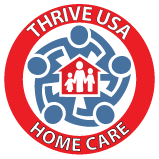Facts About ALS Support & In-Home Care
ALS (Amyotrophic Lateral Sclerosis), often known as “Lou Gehrig’s Disease,” is a neuromuscular disease that starts with muscle weakening and progresses to full paralysis throughout the body. Lou Gehrig’s disease is another name for ALS, which is not to be confused with Motor Neuron Disease (MND). The muscles that control eating, swallowing, and speaking degenerate as a result of this condition. It gradually weakens the muscles that control your arms and legs, as well as the muscles that keep your body upright. Finally, it impairs the muscles that allow you to breathe on your own to the point where mechanical assistance is required.
Facts about ALS
Among the earliest symptoms of ALS are abnormal fatigue and muscle weakness. The ALS Association says that symptoms of the disease often start in a person’s hands, feet or legs before it develops in other parts of the body. As a result, people with ALS experience such problems as:
- Tripping and falling
- Muscle cramps, tight and stiff muscles, and twitches
- Abnormal fatigue in the arms and legs
- Slurred speech
- Difficulty holding things because of weakness in their hands
The disease robs people with ALS of their independence over time. Try as they might to do things for themselves, people with ALS will eventually need caregivers to help them manage basic living skills, such as dressing, grooming, and bathing.
New ALS Cases Are Diagnosed Everyday
According to the ALS Association, roughly 5,000 Americans are diagnosed with ALS each year, averaging around 15 new cases every day. The Centers for Disease Control and Prevention (CDC) in the United States notes that it is impossible to determine the number of ALS patients in the country since disease data are not kept countrywide.
While symptoms can appear at any age and in people of all races and ethnic groups, they are most common in men and women between the ages of 55 and 75.
Researchers are unsure what causes ALS, but according to the National Institute of Neurological Disorders and Stroke, 5 to 10% of all ALS cases are caused by persons who inherited the condition from their parents. The remaining 90% of ALS cases are classified as “sporadic,” indicating that the illness strikes people at random.
ASL patients, unfortunately, only live three to five years after being diagnosed. However, there have been outliers, like Stephen Hawking, a renowned British theoretical physicist who survived for more than 50 years after being diagnosed with ALS at the age of 21 in 1963. Because of the condition, Hawking lost his ability to talk and move, and he was forced to use a wheelchair. Regardless of longevity, a person with ALS needs continual care. At Thrive USA Homecare, we provide services to meet the needs of people in all stages of ALS.
Let Us Help You Thrive & Live the Way You Want!
People with ALS can benefit from Thrive USA Homecare’s affordable and comprehensive caregiving services. Your loved one can receive daily assistance through our expert support system. We create individualized programs for people living with ALS that allow them to preserve as much freedom as possible while receiving the specialist ALS In-Home Care they require. Some of the services we provide include but are not limited to:
- Assisting with bathing, personal grooming, clothing, and toileting and ensuring medicine is taken on time.
- Meal preparation, light housework, and grocery shopping are examples of household services.
- Companion Services: accompanying your loved one to doctor’s appointments, assisting them in leisure activities, or visiting destinations.
If your loved one’s care needs are growing as a result of ALS, turn to Thrive USA Home Care’s caring team of trained caregivers. To learn more about our services, please contact us immediately. Call (301) 882-4717 for more information


